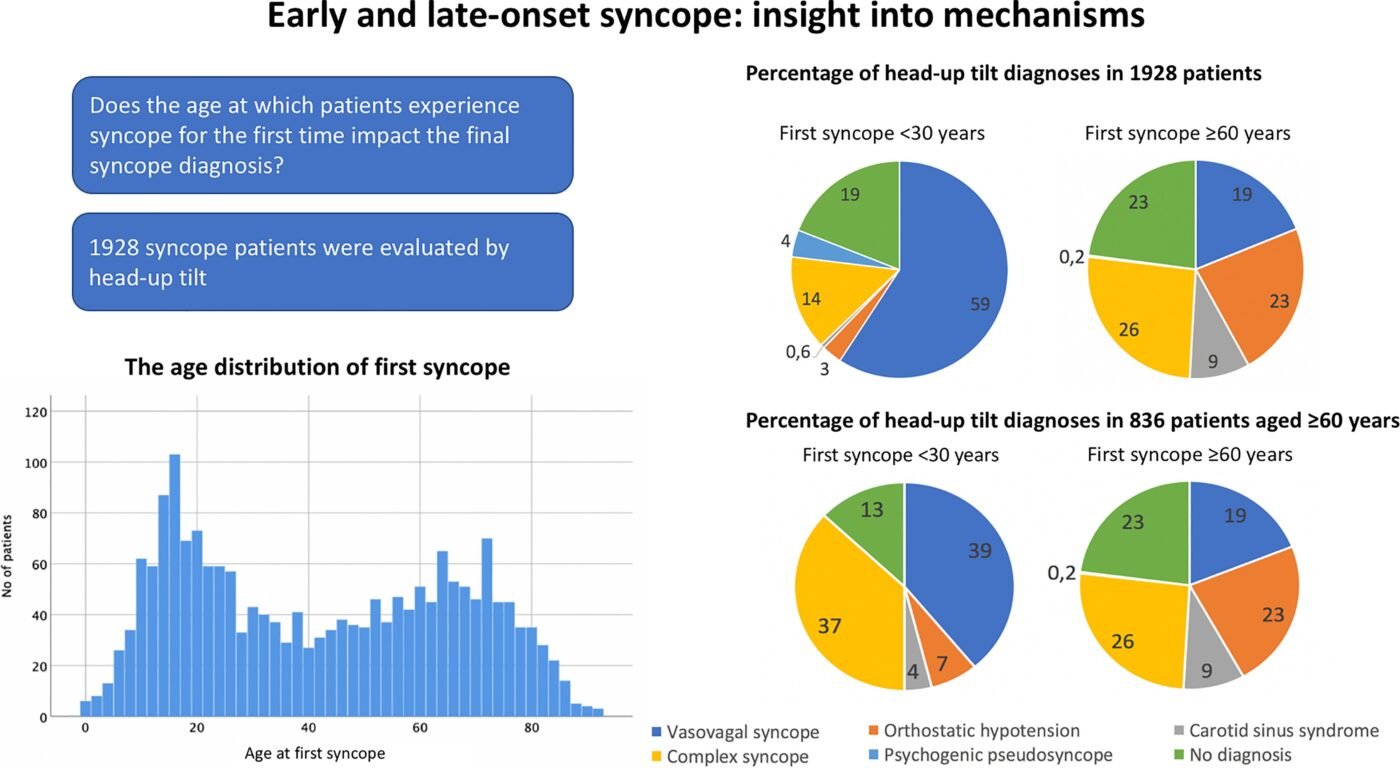Este estudo recente Early and late-on syncope: insight into mechanisms (Síncope precoce e síncope tardia: o discernimento dos mecanismos) por Torabi et al. (2022) discute a influência da idade na primeira síncope no diagnóstico final.
Link da Publicação
Early and late-onset syncope: insight into mechanisms
Aims
Unexplained syncope is an important clinical challenge. The influence of age at first syncope on the final syncope diagnosis is not well studied.
Methods and results
Consecutive head-up tilt patients (n = 1928) evaluated for unexplained syncope were stratified into age groups <30, 30–59, and ≥60 years based on age at first syncope. Clinical characteristics and final syncope diagnosis were analysed in relation to age at first syncope and age at investigation. The age at first syncope had a bimodal distribution with peaks at 15 and 70 years. Prodromes (64 vs. 26%, P < 0.001) and vasovagal syncope (VVS, 59 vs. 19%, P < 0.001) were more common in early-onset (<30 years) compared with late-onset (≥60 years) syncope. Orthostatic hypotension (OH, 3 vs. 23%, P < 0.001), carotid sinus syndrome (CSS, 0.6 vs. 9%, P < 0.001), and complex syncope (>1 concurrent diagnosis; 14 vs. 26%, P < 0.001) were more common in late-onset syncope. In patients aged ≥60 years, 12% had early-onset and 70% had late-onset syncope; older age at first syncope was associated with higher odds of OH (+31% per 10-year increase, P < 0.001) and CSS (+26%, P = 0.004). Younger age at first syncope was associated with the presence of prodromes (+23%, P < 0.001) and the diagnoses of VVS (+22%, P < 0.001) and complex syncope (+9%, P = 0.018).
Conclusion
In patients with unexplained syncope, first-ever syncope incidence has a bimodal lifetime pattern with peaks at 15 and 70 years. The majority of older patients present only recent syncope; OH and CSS are more common in this group. In patients with early-onset syncope, prodromes, VVS, and complex syncope are more common.
Key question
Does the age at which patients experience syncope for the first time impact the final syncope diagnosis?
Key finding
The first-ever syncope incidence has a bimodal lifetime pattern. The majority of older patients present recent syncope; orthostatic hypotension and carotid sinus syndrome are more common in this group. In patients with early-onset syncope, vasovagal and complex syncope are more common.
Take-home message
The age at first syncope impacts the final diagnosis. A detailed syncope history remains essential in elderly patients evaluated for syncope.
Structured Graphical Abstract

keyworks: Vasovagal syncope, Head-up tilt test, Age at first syncope, Ageing













